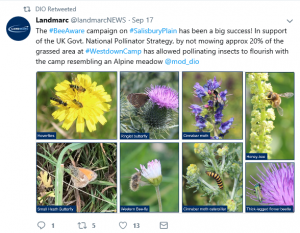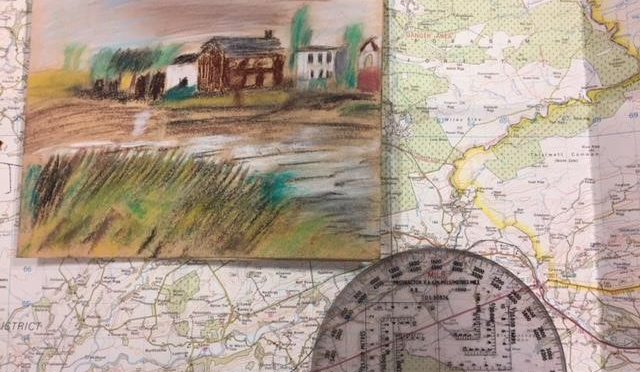I’ve been re-reading a bit of Squaddies recently, John Hockey’s ethnography of a British Army infantry unit. It was first published in 1986, and is now something of a classic of military sociology. It drew on John’s PhD fieldwork which involved a period of time living and working with a group of soldiers, something John was well qualified to do. It’s still an essential reference for understanding military participation (check out the citations in Google Scholar), and an absorbing and informative account. I was re-reading it having just reviewed a paper which was quoting it, and as often happens, I found myself carrying on reading after checking out the point I was after. Proof, to me, of the enduring value of this book.
Above all else, Squaddies seems to me to provide clear validation for the argument that military forces and the defence community in general have much to gain from sociology and a sociological understanding of military forces. There’s often a degree of antipathy within military and defence circles to the insights of sociological thinking on military matters. So I’ve been told many times over the years, in discussions with people working within these circles, that certain arguments are somehow unreliable because of the methodologies used, particularly when the methods concerned sit at the qualitative end of the spectrum. Or it’s been explained to me that much sociology is insufficiently ‘objective’, reflecting a mis-perception particularly of the more critical military sociological analyses that are out there, which are trying to examine military phenomena with reference to the political contexts in which they sit.
Yet I was struck when reading my Google news feed last week (set to deliver a round-up of news using alert terms like ‘British’ and ‘armed forces’) how the majority of news stories about British military forces are essentially about sociological issues. Last week’s feed, for example, reported stories on obesity levels among military personnel (so about bodies and embodiment), suicide rates amongst former personnel (so about the sociology of trauma and mental health) and a stream of invective on a far right website in response to a Centre for Army Leadership piece about women’s military participation (so about gender and the structuring of social life).
I’m also frequently reminded – not least by John Hockey’s work – about the contributions to military sociology by academics who have a military background and who have used their thinking and training in social science in their interventions about military sociological phenomena. John Hockey is a case in point, of course, and he reflects on this a little in his chapter in The Routledge Companion to Military Research Methods, as does David Walker. I can think of a number of others similarly placed – Lauren Greenwood, Neil Jenkings, Patrick Bury, Ross McGarry, Anthony Forster, Godfrey Maringira, Ryerson Christie, Kevin Spruce, Hannah West – who even if they don’t describe themselves as sociologists, clearly (to me, at any rate) use their military experience to inform their academic social scientific research in ways that seem sociological.
I wonder if the UK is quite distinct in the ways that the defence and academic military research communities engage with each other (or don’t), and whether this explains at least some of the antipathy towards military sociology’s insights? The North American context is quite different, with the ‘soldier-scholar’ model animating much work behind the IUS-AFS and the journal Armed Forces & Society. In mainland Europe the practice of social scientists working within defence ministries, evident in the ERGOMAS meetings and the recently revived journal Res Militaris, mean that a very different military institutional view is possible of the benefits of sociological approaches to military issues. In the UK, it seems that some kinds of social science – behavioural psychology, management studies – are considered useful for the Ministry of Defence and the armed forces. The work of a few social scientists has had clear utility over time in shaping defence thinking (see for example Tony King’s work on military transformations or Tim Edmunds’ on security sector reform). But beyond these examples, I often feel that we’re missing a trick here in the UK.
It’s the critical analyses, in particular, that have the most to offer. Those labouring in the Ministry of Defence to respond to the Government latest anxieties about the armed forces / civil society disconnect, would surely have an easier time if they went through a few back-issues of Critical Military Studies to help with their thinking (even if they disagree with the analysis). For those faced with unpicking the multiple problems caused by the outsourcing of military tasks and requirements, such as base maintenance or personnel recruitment, something like Swed and Crosbie’s The Sociology of Privatized Security might help. Concerns about the fine lines between criminal acts and acts legitimated under rules of engagement call for insights on criminology and war. The list is almost endless; the point is that sociological analyses (including, perhaps even particularly, those most critically engaged with military activities and phenomena) have enormous potential to inform the UK’s military and defence policy and practice.
Above all else, the idea persists with me that most military personnel are actually really good sociologists – and to return to the starting point, I think this is one reason why Squaddies is such a good book. Military personnel live and work from a relatively young age in an institution, so social structures, organisations, hierarchies and institutional behaviours are thoroughly familiar, and they’re dealing with other people all the time, so identities, positionality, micro-politics and embodiment are routine, daily issues. Sociology and the armed forces seem to fit together well.
Rachel Woodward


